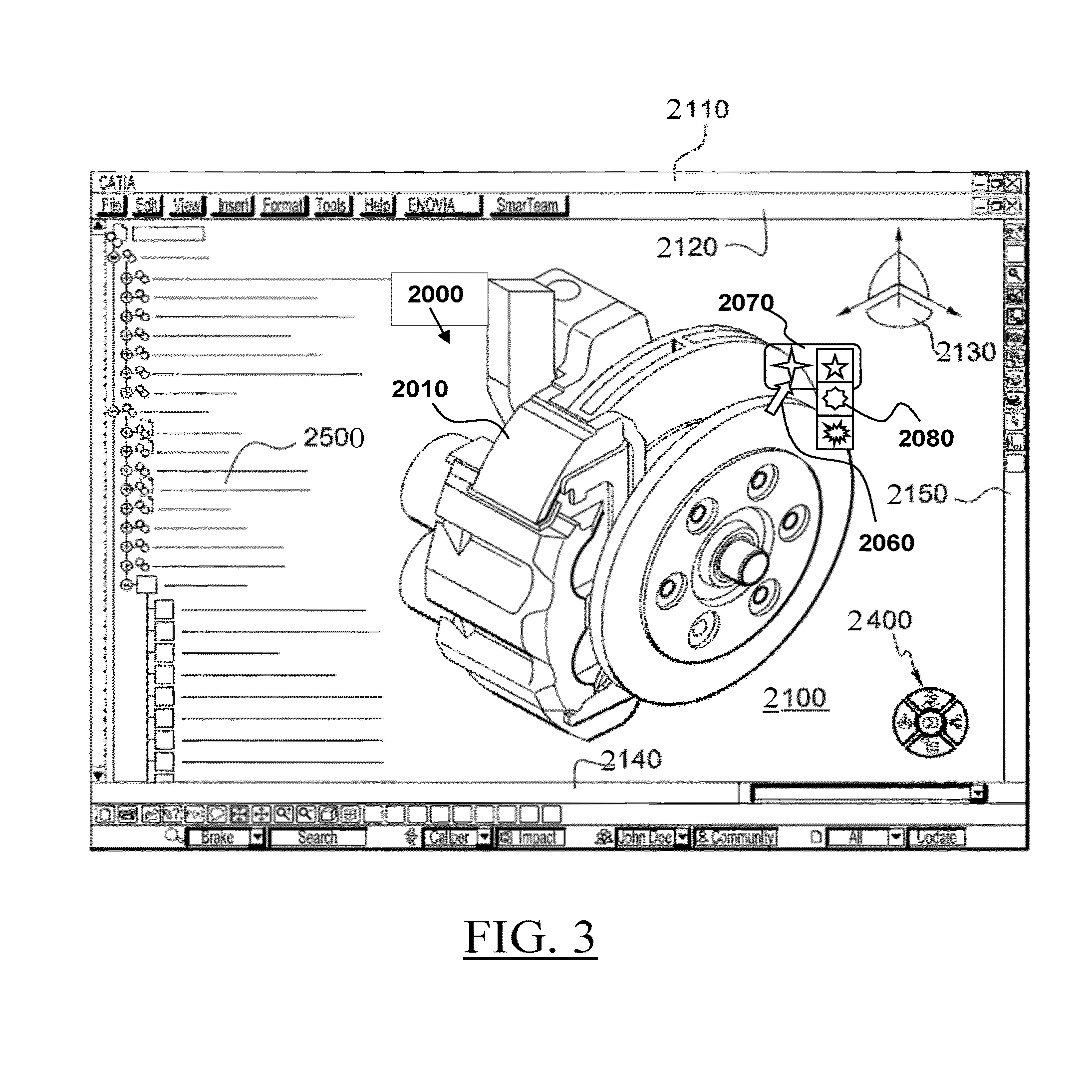Engraving a 2d image on a subdivision surface
a subdivision surface and 2d image technology, applied in image data processing, special data processing applications, instruments, etc., can solve the problems of limited neighborhood influence of control points and inability to support subdivision surface technology
- Summary
- Abstract
- Description
- Claims
- Application Information
AI Technical Summary
Benefits of technology
Problems solved by technology
Method used
Image
Examples
Embodiment Construction
[0030]With reference to the flowchart of FIG. 2, it is proposed a computer-implemented method for designing a 3D modeled object. The method comprises a step of defining S10, by a user, a base mesh associated to a subdivision surface and to a corresponding predetermined mesh-to-NURBS-surface conversion algorithm. The subdivision surface represents the 3D modeled object. The method also comprises defining S20, by the user, a 2D image and a location for engraving the 2D image on the subdivision surface. And the method then comprises determining S30 a NURBS surface that corresponds (i.e. by “corresponds”, it is meant that the specific way to obtain the NURBS surface is an implementation detail, as long as the result would be obtained—at least approximately, e.g. in the meaning of “approximation” provided later—by the following steps, even if those specific steps are not implemented) to applying a deformation map on the result of performing the mesh-to-NURBS-surface conversion algorithm ...
PUM
 Login to View More
Login to View More Abstract
Description
Claims
Application Information
 Login to View More
Login to View More - R&D
- Intellectual Property
- Life Sciences
- Materials
- Tech Scout
- Unparalleled Data Quality
- Higher Quality Content
- 60% Fewer Hallucinations
Browse by: Latest US Patents, China's latest patents, Technical Efficacy Thesaurus, Application Domain, Technology Topic, Popular Technical Reports.
© 2025 PatSnap. All rights reserved.Legal|Privacy policy|Modern Slavery Act Transparency Statement|Sitemap|About US| Contact US: help@patsnap.com



